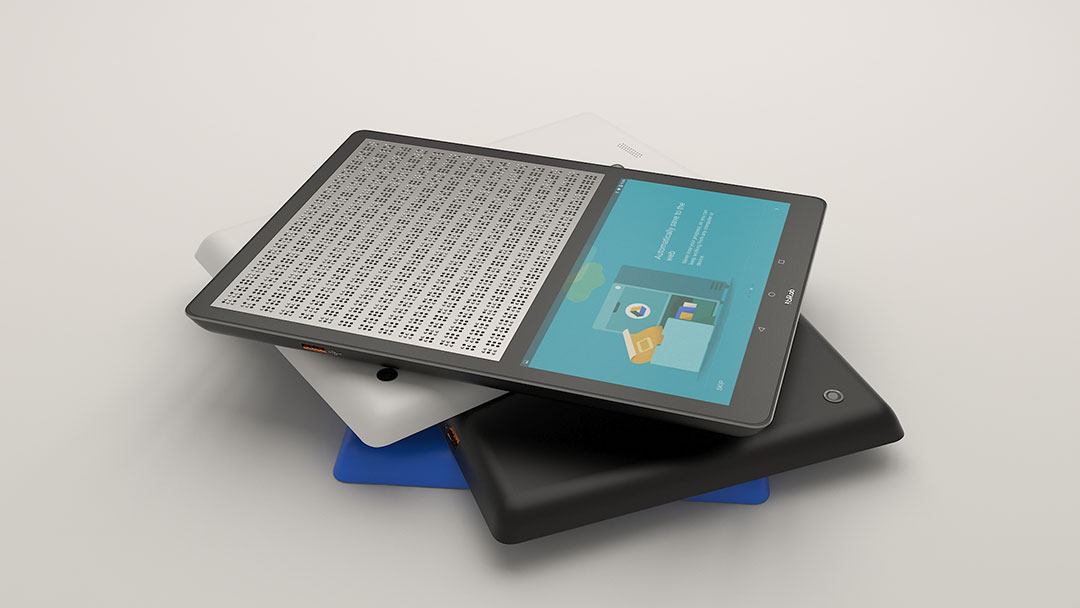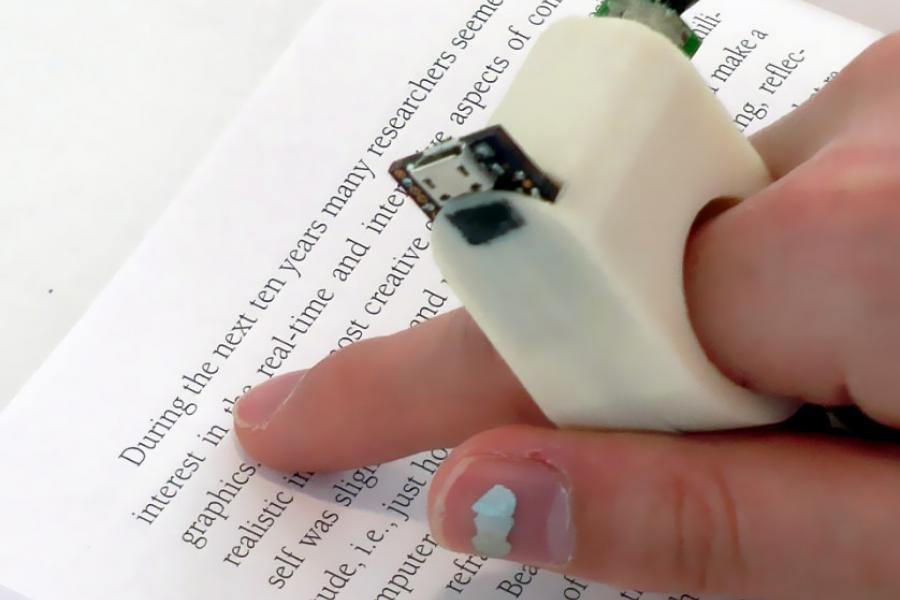Braille Displays and Notetakers: Key Tools for Learning and Work
Discover Ingenious Devices Designed for the Aesthetically Impaired
The growth of ingenious devices for the visually damaged stands for a significant advancement in ease of access and independence. Technologies such as wise glasses with AI abilities and mobile applications developed to supply auditory descriptions are reshaping day-to-day experiences for individuals.
Smart Glasses for Navigating

Smart glasses designed for navigation are revolutionizing the means aesthetically impaired people communicate with their environment. These innovative devices utilize a combination of electronic camera technology, expert system, and auditory responses to provide real-time details about surroundings. By employing barrier discovery systems, wise glasses can notify users to possible dangers, enabling safer wheelchair in both unknown and familiar setups.
The assimilation of GPS technology even more boosts navigation abilities, enabling customers to receive auditory directions as they move. This hands-free method not just cultivates independence however also equips visually impaired people to navigate city landscapes with enhanced self-confidence. Additionally, several smart glasses are outfitted with attributes that determine landmarks and road indicators, giving contextual information that enhances the user experience.
Furthermore, the advancement of these gadgets is constantly advancing, with firms working to boost the accuracy of object recognition and increase the series of navigational attributes. As clever glasses become more affordable and obtainable, they hold the potential to dramatically change daily life for aesthetically damaged users. Ultimately, these innovative tools represent an important step toward inclusivity, offering improved mobility and a greater sense of freedom for people navigating the globe around them.

Mobile Application for Daily Living
How can mobile applications improve the day-to-days live of aesthetically impaired individuals? Mobile applications are revolutionizing the means visually damaged customers navigate their environments, manage everyday jobs, and gain access to details. These applications supply important assistance with numerous functionalities, fostering self-reliance and enhancing quality of life.
Several ingenious mobile apps are designed particularly for everyday living. Applications like Be My Eyes attach visually impaired users with sighted volunteers through video clip phone calls, allowing them to obtain real-time assistance with tasks such as reviewing labels or navigating unfamiliar spaces. In A Similar Way, Seeing AI, created by Microsoft, makes use of artificial knowledge to define environments, read text, and recognize objects, successfully changing a smartphone right into a powerful device for daily support.
In addition, navigating applications tailored for the aesthetically impaired, such as Aira and BlindSquare, use audio-based instructions and ecological info, enabling customers to traverse their surroundings securely and confidently. Past navigation and instant help, mobile applications likewise support organization and job administration, with functions that aid customers set tips, create to-do lists, and track appointments. In recap, mobile applications function as vital sources, equipping aesthetically damaged people to lead even more independent and fulfilling lives.
Wearable Technologies for Help
Empowerment through innovation is increasingly noticeable in the world of wearable gadgets created to aid visually impaired individuals. These innovative devices incorporate effortlessly into daily life, enhancing navigating and providing necessary feedback to individuals. Wise glasses furnished with cameras can review and acknowledge faces message out loud, allowing customers to engage even more with confidence in expert and social settings.
Another noteworthy innovation is using haptic feedback systems in wearable tools. These systems use resonances or various other tactile signals to communicate information about the customer's setting, such as barriers or changes in surface, boosting flexibility and safety and security. Wearable innovations likewise include wristbands that link to mobile phones, signaling users to notices through refined vibrations, therefore improving connection without reliance on aesthetic signs.
As these modern technologies continue to advance, they are not only improving independence for visually impaired individuals yet likewise promoting a higher sense of inclusion in society. By linking the gap in between challenges encountered in day-to-day living and the potential for freedom, wearable innovations function as pivotal devices in the mission for equality and empowerment for those with aesthetic impairments.
Audio Summary Tools
Audio description tools play a vital duty in enhancing availability best eyewear for visually damaged people, giving them with the capability to engage with aesthetic media. Mobility aids for visually impaired users. These devices supply narrated descriptions of vital visual aspects in films, tv shows, and live efficiencies, making sure that users can totally understand the context and emotions conveyed with visuals
Audio summary can be incorporated right into different systems, consisting of streaming solutions, cinema screenings, and live cinema. Lots of preferred streaming services now include audio description as an accessibility attribute, allowing viewers to select it easily. Along with traditional media, specialized applications additionally exist, providing audio summaries for art exhibits, galleries, and various other cultural events.
The performance of audio summary depends upon the ability of the storytellers, who should convey visual information succinctly without interfering with the initial audio. Developments in this field are likewise leading the means for even more customized experiences, where customers can adjust the level of detail and pacing according to their choices.
Braille Innovations and Gadgets
Braille devices and advancements have significantly transformed the way visually impaired people interact with text and details. Modern developments have brought about the growth of versatile tools that improve proficiency and self-reliance amongst users. Notably, Braille show innovations have actually evolved, enabling dynamic analysis experiences. These tools convert electronic text into Braille, making it possible for users to access a vast selection of details on smartphones, computer systems, and tablets.
Additionally, mobile Braille notetakers combine traditional Braille input with modern-day performances, assisting in note-taking, organizing, and record modifying on the go. OCR devices for the blind. visit here These compact tools commonly feature text-to-speech capabilities, connecting the gap in between Braille and acoustic details
Furthermore, ingenious Braille printers have actually arised, enabling individuals to generate Braille tags, documents, and educational materials efficiently. This ease of access cultivates greater engagement in instructional and professional atmospheres, inevitably advertising inclusivity.
Moreover, research right into clever Braille technologies continues to expand. Tools that include expert system are being discovered to supply real-time navigating assistance and contextual details, enhancing the customer experience in diverse settings. Overall, these advancements mirror a commitment to encouraging visually impaired people via modern technology, ensuring they can conveniently access and engage with the globe around them.

Verdict
The development of innovative devices for the aesthetically damaged significantly boosts self-reliance and quality of life. These modern technologies not just foster greater incorporation however likewise promote autonomy in day-to-day activities, inevitably contributing to an extra available and equitable society for aesthetically damaged people.
As clever glasses end up This Site being a lot more available and inexpensive, they hold the possible to dramatically change daily life for visually damaged users. Mobile apps are changing the method visually damaged individuals browse their atmospheres, take care of day-to-day jobs, and access details. Apps like Be My Eyes attach aesthetically damaged users with sighted volunteers using video phone calls, enabling them to obtain real-time help with tasks such as reading tags or browsing unfamiliar spaces.In addition, navigation apps tailored for the aesthetically damaged, such as Aira and BlindSquare, supply audio-based directions and environmental info, enabling customers to traverse their surroundings safely and confidently.The development of cutting-edge tools for the visually damaged considerably boosts self-reliance and quality of life.